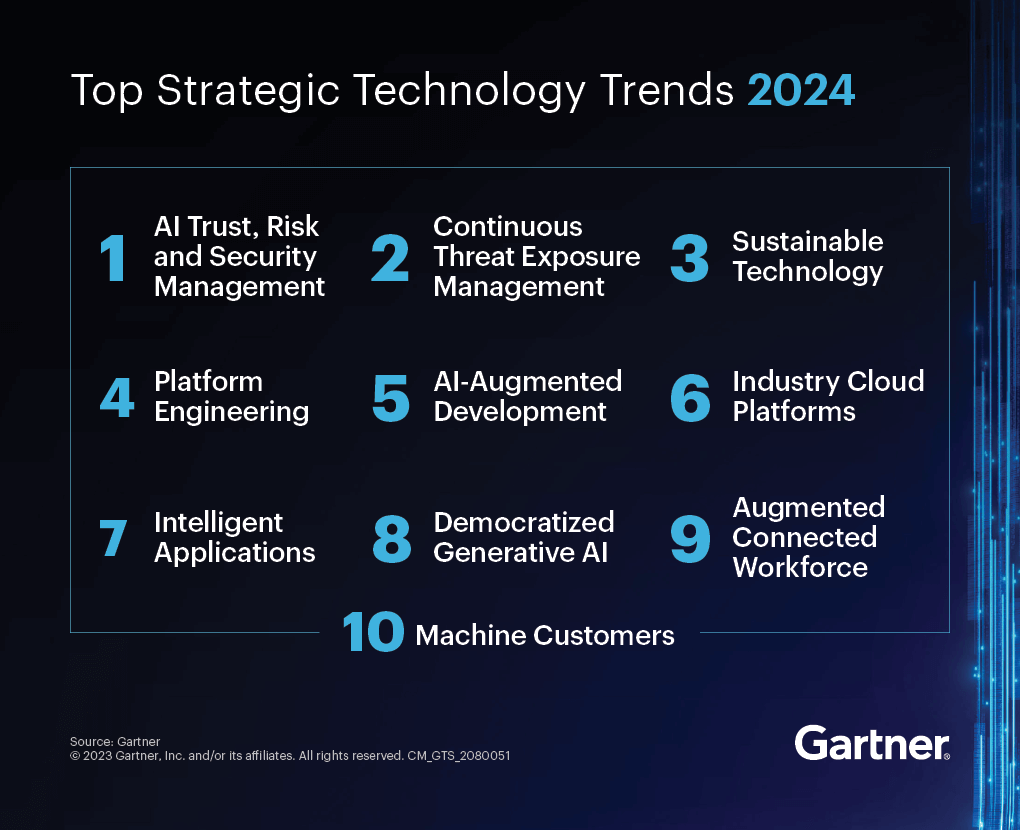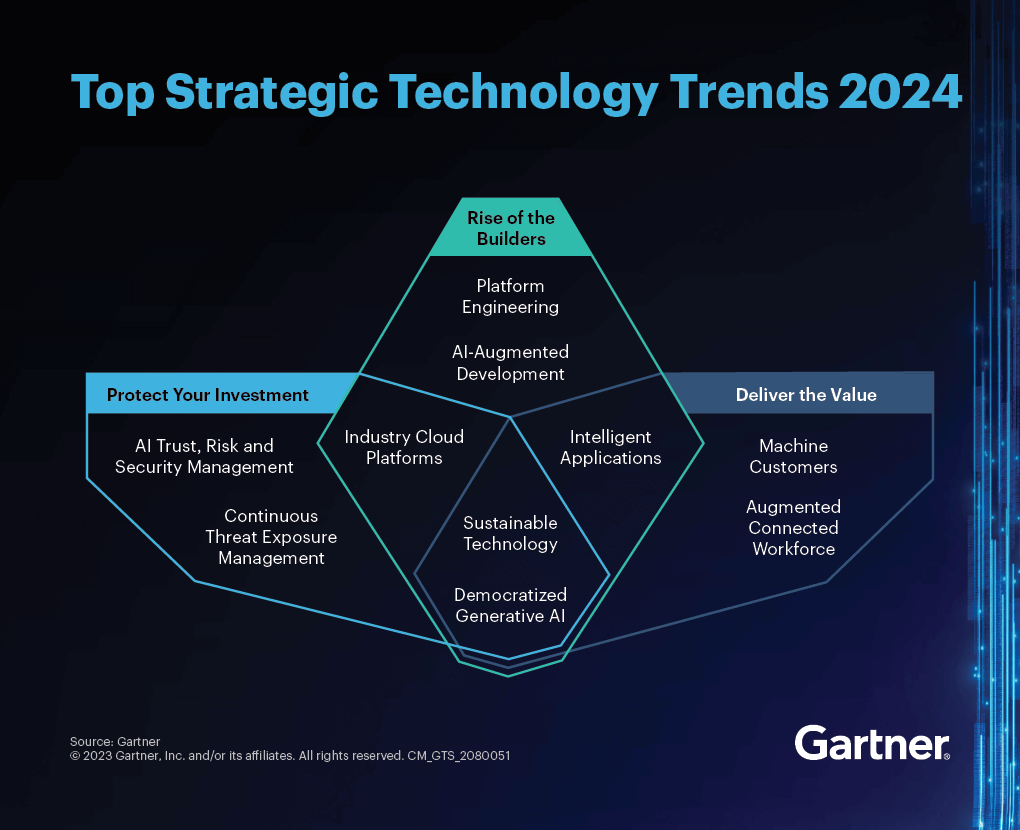Gartner Tech Trends 2024: A Guide for Companies
Discover our Guide for the ten most important strategic technology trends for 2024 according to Gartner in our blog post and find out how these innovations can drive your company forward in the age of AI.
The world of technology is evolving rapidly, and with it the needs and opportunities of companies. In this context, Gartner has identified the ten most important strategic technology trends for 2024. These trends not only point the way forward, but also offer concrete approaches to help companies achieve their business goals faster and more efficiently. Here is an overview and how they can influence your company.
Overview of the Trends
- AI Trust, Risk and Security Management (AI TRiSM): This trend emphasizes the importance of trust, risk management and security when dealing with AI technologies. Companies must ensure that their AI applications are trustworthy and secure.
- Continuous Threat Exposure Management (CTEM): This involves the constant monitoring and management of threats to ensure the security of IT systems.
- Sustainable Technology: Sustainability is becoming increasingly important and companies need to use technologies that are environmentally friendly and sustainable.
- Platform Engineering: The development of user-friendly platforms that integrate various services and applications is another key trend.
- AI-Augmented Development: Integrating AI into the development process makes it possible to work faster and more efficiently and create innovative solutions.
- Industry Cloud Platforms: Specialized cloud platforms for various industries offer tailor-made solutions and services.
- Intelligent Applications: Applications that use AI to become smarter and more user-friendly are crucial to a company’s success.
- Democratized Generative AI: Generative AI is becoming more accessible, which opens up new possibilities in content creation and design.
- Augmented Connected Workforce: The use of technology to support and network employees is crucial for efficiency and productivity.
- Machine Customers: This involves the development of algorithms that can make decisions independently and act as customers.
These trends cover a broad spectrum: from the management of AI risks to the development of platforms and applications driven by AI. Of particular note is the role of generative AI, which is expected to change 70% of the design and development effort for web applications and mobile apps by 2026.
Three Core Topics for the Integration of Trends
Topic 1: Protecting your Investment
To ensure the long-term success of your technology investments, it is crucial to act thoughtfully and realistically and to plan ahead. This includes considering risk and safety management in AI projects and the sustainable development of technologies.
Topic 2: The Rise of the Developers
Unleashing the creative potential of developers is a key element. This requires the use of suitable technologies and the development of roadmaps that also involve non-specialists in development.
Topic 3: Creating and delivering Value
Companies should constantly refine the user experience, adapt to changing customer requirements and explore new ways to increase sales. Algorithm-based customers and controlled access to digital tools play a central role here.
Use of the Technologies in Companies
The trends offer multiple opportunities to realize the goals of CEOs and CIOs. Through the right combination of these technologies, companies can improve their resilience, maximize the potential of data, successfully attract and retain talent, achieve ESG goals, drive growth and accelerate digital transformation.
Conclusion
The strategic technology trends identified by Gartner for 2024 provide a valuable basis for strategic planning in companies. The aim is to understand these trends, evaluate them in relation to the specific situation of your own company and integrate them accordingly. This not only protects and optimizes investments, but also paves the way for sustainable growth and innovation.
Source: Gartner




